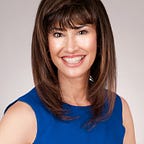Learning from Fictional Friends To Live Our Lives Better
The truth is stranger than fiction. Lord Byron wrote those words in 1823 in a poem called “Don Juan,” which satirized the legendary real-life womanizer. His words are still true today, perhaps even more so as our country shudders from a combustible mix of global pandemic, a chaotic election and episodes of racial injustice. Faced with so much uncertainty and anxiety, what is the purpose of fiction? Fiction offers us something that life cannot give us so easily: the ability to make some of our mistakes before we make them.
In this episode of Problem Solved podcast, I interview debut novelist Cathleen Barnhart about her new middle grade novel That’s What Friends Do, which centers around a me-too moment that occurs between two best friends in seventh grade. Barnhart chose to tell the story through the perspectives of both friends. This perspective-taking approach is much like what the AREA Method recommends for holistically solving complex problems by checking and challenging cognitive biases.
Her novel, and this podcast, illustrates what we know about difficult conversations — that they make us uncomfortable and often lead to hurt and confusion. But Barnhart’s novel also illustrates what we often forget: which is that we can use discomfort to get to a better place, to be stronger and to find our voice. That’s What Friends Do is a beautiful example of how we can learn from characters’ mistakes to better plan for and think through real life experiences.
As our messy society is learning how to speak up about real injustices of all sorts, making time to read and experience fiction continues to be valuable. Fiction can help us navigate a better path forward in this real, messy world providing us with skills and tools to help build empathy and understanding with others.
